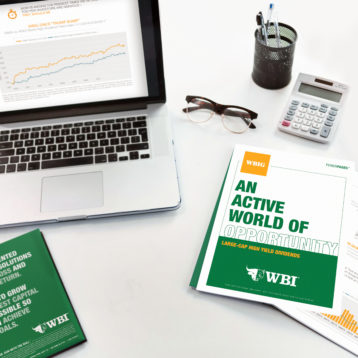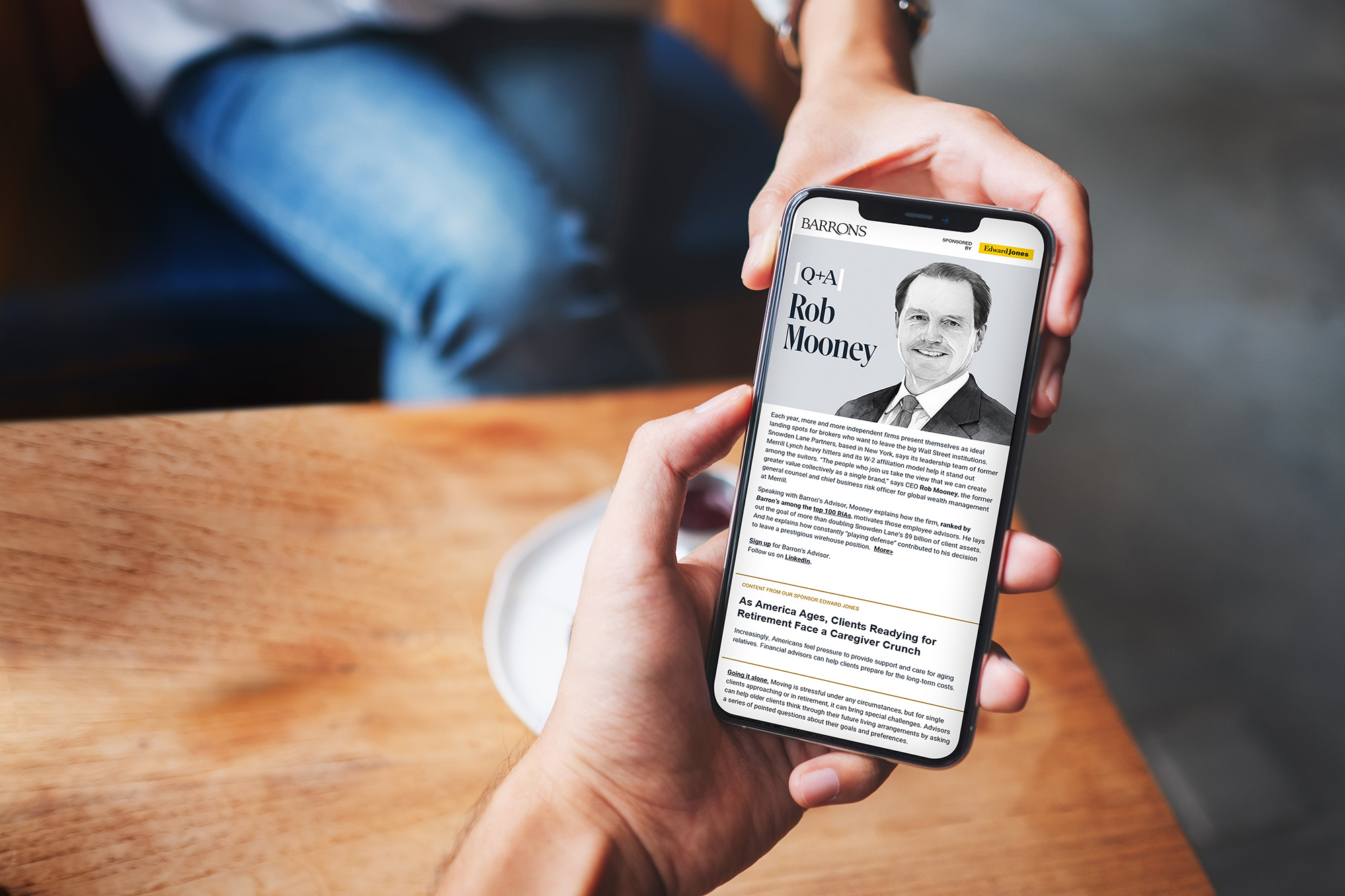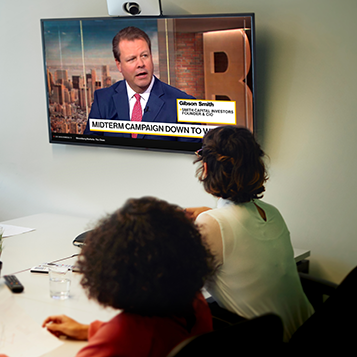Whether a brand’s story is told in local cities or across the world, we are at its side. The journey to the intersection of insightful thinking and your business growth starts the minute we rev the engine.
Water & Wall is an award-winning marketing and communications agency whose best work exists at the intersection of inspired thinking and your business growth.
OUR SERVICES
In every engagement, we tailor our clients’ unique communications strategy to align with their overall business goals.
FRAME
we are stewards of your brand
- Communications audit
- Competitive analysis
- Reputation management
- Message development
CREATE
we are writers and storytellers
- Branding
- Data driven storytelling
- Editorial content
- Design services
ENGAGE
we connect people with ideas
- Media relations
- Digital marketing
- Social media management
- Executive visibility
We only apply a given service if it gets clients on track to achieve their goals and we do this across the entire financial ecosystem: from asset management to RIAs, blockchain to crypto, consulting to accounting and more. We’re experts at designing integrated plans that serve as roadmaps…
WHERE ALL SIGNS POINT TOWARDS RESULTS.
We’re business people first, communicators second.
Here’s a handful of the many friends we’ve made along the way:










OUR WORK
WHEN DESIGN
COMPLEMENTS
THE
TRADITIONAL
READ MORE M&A INSIGHTS
DURING A
CRISIS
READ MORE WHY DIVERSITY
MATTERS
READ MORE DARE TO
BE FEARLESS
READ MORE RIDING THE
INDEPENDENT RIA
WAVE
READ MORE MEET THE
MANAGERS
READ MORE PRIVATE (EQUITY)
PROPERTY
READ MORE SMART, CLEAR
TAX GUIDANCE
IN UNCERTAIN
TIMES
READ MORE BUILDING THE
NEXT GENERATION
OF WEALTH
READ MORE THE ADVISOR’S
ADVISOR
READ MOREWHEN DESIGN COMPLEMENTS THE TRADITIONAL
WHEN DESIGN COMPLEMENTS THE TRADITIONAL
WHEN DESIGN COMPLEMENTS THE TRADITIONAL
For ETF investment manager, WBI Investments, an appetite for creativity helped us succeed together. We implemented an integrated communications program, for the $2 billion U.S.-based asset manager, that combined journalist engagement, social media amplification, research, podcast production, and an enhancement to the firm’s creative branding materials.
Traditional media relations was at the core of this program, with the Water & Wall team introducing WBI to print and broadcast journalists, securing meaningful coverage for its client. The earned media was complemented by owned media, which in this case comprised two primary assets – product brochures and a podcast.
For the podcast, Water & Wall led the pre-production strategy, from content, to scripting to distribution plans once WBI produced the podcast.
Water & Wall also designed marketing storyboards for WBI’s exchange-traded funds. Our design work earned us an opportunity to develop visual concepts for their quarterly magazine and forthcoming proprietary advisor-focused robo tool.
The keys to success here were an enthusiastic leadership team and expert client-side marketing support.



M&A INSIGHTS DURING A CRISIS
M&A INSIGHTS DURING A CRISIS
M&A INSIGHTS DURING A CRISIS
Solomon Partners has the unique distinction of being one of the first independent investment banks, yet unlike many of their peers who have long since sold, merged or fizzled away, Solomon Partners is not only still here… they’re thriving!
We were brought on to create an integrated communications strategy for their CEO, leveraging his decades of experience and insights – his fantastic personality was a bonus – across traditional and social media channels.
Supported by a strong M&A environment, we immediately got to work, securing media coverage in Bloomberg TV, Business Insider, Financial Times, Forbes and Fortune, among others. We also created a new LinkedIn series to help build up his digital network, writing a monthly column showcasing his thoughts on everything from M&A trends to the impact of COVID-19 to the future of the workplace.



WHY DIVERSITY MATTERS
WHY DIVERSITY MATTERS
WHY DIVERSITY MATTERS
The need for greater diversity within finance is fortunately (and finally!) gaining the attention it so desperately deserves. And at the center of this movement is a non-profit that is literally changing the face of investing: Girls Who Invest.
Water & Wall has been a fan of Girls Who Invest since they first launched and we’re still pinching ourselves that we get to work together. We were initially brought on board to develop their corporate messaging and positioning, as well as launch a media relations campaign to increase their awareness within the asset management and broader business communities.
As GWI grew, so did our communications strategy, and we took over their social media to help grow their digital presence and better connect with their audience. By combining our strong social experience and graphic design capabilities, we worked with GWI’s internal team to create an entirely new social strategy. In just one year, we’ve increased their LinkedIn & Instagram followers by more than 200% and launched a series of ongoing creative campaigns that is driving audience engagement.



DARE TO BE FEARLESS
DARE TO BE FEARLESS
DARE TO BE FEARLESS
There are few communications and marketing campaigns in the institutional financial services community that reached as many people as Fearless Girl. For so many, she has become a to drive positive change well beyond business. From the start, our client, State Street Global Advisors, had grand ambitions of being a leader in influencing change among the global corporate ranks. Simply put, together by securing earned media with a focus on North America, we would set the foundation for future asset stewardship priorities with a focus on gender diversity in business. We would convey the message that women should have a far greater presence in the board room and in the C-suite than they do now.
On the day we introduced the statue of that little girl challenging the Charging Bull (note: now she’s outside the New York Stock Exchange), we saw hundreds of media outlets around the world cover the story. One outlet in particular, Business Insider, ran a story read by nearly two million people within hours of publication. Since then, State Street spokespeople have appeared on and in every major broadcast and print business news outlet in the world to discuss the asset managers ongoing effort.
Today, the Fearless Girl remains a powerful and everlasting symbol, and we’re proud to have been the agency driving the media coverage behind this icon.



RIDING THE INDEPENDENT RIA WAVE
RIDING THE INDEPENDENT RIA WAVE
RIDING THE INDEPENDENT RIA WAVE
We’ve worked with Snowden Lane Partners, a $9 billion independent wealth advisory firm, for nearly their entire existence. As one of our agency’s first clients, it’s been a privilege watching them become the RIA powerhouse they are today, and there’s been no shortage of exciting news and stories to share along the way.
We’ve taken a largely earned media-first approach to help increase – and then maintain – their brand awareness in an increasingly crowded RIA landscape. This has led to hundreds of articles in leading financial advisor publications such as Citywire, Financial Advisor IQ, Financial Planning, Investment News and WealthManagement.com, among others, as well as top-tier outlets such as Barron’s, Forbes, Financial Times and The Wall Street Journal.
In recent years, we started creating thought leadership-driven content to help shine a light on their executive team and expand their reach on LinkedIn and other channels.



MEET THE MANAGERS
MEET THE MANAGERS
MEET THE MANAGERS
We routinely secure high-profile media coverage that showcases the people behind successful investment strategies, who are in many cases as fascinating as the strategies themselves.
Recent examples include ALPS subadvisor, Smith Capital, for whom we developed an earned media engagement strategy to draw investor attention to their Total Return Bond and Short Duration Bond Funds. Since incorporating these in the broader ALPS program, Water & Wall secured opportunities for founder, Gibson Smith, as the featured source in top-tier print and broadcast media coverage, and Smith Capital’s assets have grown to $1 billion to date.
Elsewhere, our work for Resolute Investment Managers. At a time in our business when positive earned attention is difficult to come by for even the best performing funds, we secured a profile in Barron’s on the best-in-class American Beacon Sound Point Floating Rate Income fund.
Finally, Business Insider named Lori Heinel, State Street Global Advisors Deputy Global CIO, to their “100 People Transforming Business” list. Each year, Lori is featured as commentator on major business broadcast networks and in top-tier print outlets dozens of times as the team leverages her thinking and its journalist relationships to raise her profile.
These assignments are representative of a key service offering on the communications side of our business that will be critical to our asset management clients’ business growth going forward.



PRIVATE (EQUITY) PROPERTY
PRIVATE (EQUITY) PROPERTY
PRIVATE (EQUITY) PROPERTY
Water & Wall began working with Cresset Capital in September 2019 just as the firm surpassed $6 billion in assets under management. Though it had a foothold in the private investment market and an exemplary reputation as stewards of institutional, family office and high net worth assets, Cresset had embarked on a new journey into a rarified corner of the real estate world – Qualified Opportunity Zones (QOZ).
Cresset tasked Water & Wall with developing a comprehensive messaging and earned media strategy to draw positive investor attention to their QOZ fund, and to inform audiences on the investment and social and benefits of QOZs.
Since inception, our efforts has secured coverage in more than 50 articles showcasing Cresset as a leading voice in the QOZ space, with regular coverage in Bloomberg News, The Real Deal, Financial Planning, GlobeSt., REFI, and other local, trade and top-tier outlets



SMART, CLEAR TAX GUIDANCE IN UNCERTAIN TIMES
SMART, CLEAR TAX GUIDANCE IN UNCERTAIN TIMES
SMART, CLEAR TAX GUIDANCE IN UNCERTAIN TIMES
For the EY U.S. Tax business, we rebuilt their earned media relations program from the ground up and took ownership of its executive leadership team’s social media presence all with the intention of giving them a leading voice on critical global issues.
Beginning February 2021, we helped the consultant hone its messaging, coached a new roster of intellectually diverse subject matter experts and strategically selected top-tier, trade and broadcast media outlets for those experts to dispatch that message. Water & Wall also managed the social media profile of the head of the 7,000-team-member U.S. Tax business, distributing content and increasing followers by 48% on Twitter and 17% on LinkedIn.
The earned media program addressed themes from global corporate tax policy, to crypto currency and blockchain, to payroll, to the implementation of technology as it relates to tax, among other topics.



BUILDING THE NEXT GENERATION OF WEALTH
BUILDING THE NEXT GENERATION OF WEALTH
BUILDING THE NEXT GENERATION OF WEALTH
We love a challenge and people love a good story rooted in rich history. Cue Arnhold LLC, a $4.5 billion family office and investment management firm.
For Arnhold LLC, we had the privilege of guiding a storied name in financial services across Europe, dating back to World War 2, and in the US through a comprehensive branding process to help establish their family office headquartered in New York.
In a months-long process, Water & Wall developed a full suite of branding and business development materials to support Arnhold’s launch, including a messaging hierarchy, logo, pitch book, business cards and letterhead.



THE ADVISOR’S ADVISOR
THE ADVISOR’S ADVISOR
THE ADVISOR’S ADVISOR
ETF Securities, a $20 billion global asset management firm, retained Water & Wall to develop a content marketing program targeting financial advisors, a segment of the wealth management industry with which we’re deeply familiar. Our work included the creation of a suite of print collateral and video content to educate advisors on the merits of investing in commodity ETFs. A major component of our strategy was to write the sales materials in a way that made them intelligible to end-clients, while marrying that with thoughtful design and execution, allowing advisors to pass along to clients for educational purposes. The visually enhanced, story-driven content achieved extremely high engagement rates, giving ETF Securities an advantage over its commodity fund competitors.



Number of years
with a focus on ESG
Awards won
honoring our work
Brands
we've worked with
% Conversion rate
on earned media
MEET THE TEAM
Andrew Healy
Partner
Voracious reader. Soccer enthusiast. Dad. If you ask whether these are the ingredients for a busy life or a career storyteller, then the answer you’d get is both. Andrew co-founded Water & Wall with the expressed purpose of applying his love for capturing clients’ stories and sharing it with the exact right audience to help their businesses grow. He takes a measured, disciplined approach to the communications process that has resulted in some of the longest-tenured client relationships in the business, and he’s a driving force behind the agency’s expansion into digital and next-gen marketing techniques. And when he’s not working, “Dad” usually gets bumped to the front of that earlier list.
Matt Kirdahy
Partner
Matt Kirdahy was a journalist first and a communications and marketing executive second. There’s something to be said about having the same professional experience of the people to whom you’re approaching with your client ideas. While the traditional pitch-and-place priorities connected to the roots of the business have evolved into much more, his role still calls for those core media skills. His most re-watched movie is The Fugitive (or maybe John Wick) and when he’s not on the clock, he’s trying to get Gunner to make friends at the dog park.
Jesse Chen
AVP, ESG + Sustainability
A marketing and PR maven with a knack for words and a love of strategy, Jesse has helped clients across the financial, tech, and VC/PE sectors tell compelling stories, snag industry awards, and build strong, long-lasting media relationships. Strategy is key when you’ve backpacked solo across Europe and the U.S. as she has. Jesse is helping our clients understand what makes them stand out, traveling to any lengths necessary to deliver that story to the audience that matters most.
Jen Corletta
AVP, Corporate Policy
As a lover of prose, it’s ironic Jen hates career bios. An English major turned PR pro, she took reading the news to a whole new level when she entered the corporate sector. With years of agency experience under her belt, Jen is skilled in media relations across B2B and corporate brands and leading teams to think bigger picture when delivering corporate positioning and strategy. Media is her bread and butter and she’s committed to the kind of long-term storytelling that is most meaningful to her clients. In a perfect world, when she’s not working, you can catch Jen at a live show or nose deep in a cookbook.
Rebecca Schmidt
AD, FinTech + Digital Assets
As the shy kid who loved creative writing growing up, Rebecca (or Becks as her colleagues call her) found her passion when she entered the world of communications 5+ years ago. Having experienced the true agency life, Becks has represented clients in more industries than she can count on both hands, eventually finding her footing in the world of financial PR. Challenging industries with a great story to tell are Becks’ favorite clients and she’ll never get sick of pitching breaking news. When she’s not working from her (home) office, Becks can be found hanging with Corgi, Gideon at the closest brewery around.
Alaina Hay
AAD, Creative Project Lead
Alaina moved to New York into a new apartment and became friends with the nearest bodega owner on a Friday. Monday morning, she began her career in financial communications working in the private equity, capital markets, wealth management, and asset management space. She’s quick on her feet, able to turn, jump, twist in an 8-count set, that’s what 15 years of technical ballet training will do. She transformed her love of exploring movement to looking for new opportunities where her clients’ can share their unique narrative. Whether searching for media opportunities, message crafting, or developing specialized content, she choreographs new ways her clients can share their voice. When not scrolling through the news, she’s likely walking to the nearest park, bakery, or shoe pop-up.
Kevin Santo
Senior Account Executive
Kevin’s path into financial communications began at the sports desk of his college newspaper, of all places. He fell in love with writing, ditched his original plan to apply to business school and opted for a communications degree instead. Post-graduation, a passion for storytelling served as the thread that tied both plans together, as he began serving clients in the corporate and financial services group at his first agency. Having spent the past three years working with private equity firms, alternative asset managers and hedge funds, Kevin relishes opportunities to turn the small details into significant stories for his clients. And if he’s not at his desk, he’s either fulfilling his duties as The Fun Uncle to his eight nieces and nephews, or less importantly, continuing his search for the perfect egg sandwich.
Sonia Wong
Senior Account Executive
Sonia's path to financial communications began at a Taiwanese restaurant in the East Village. Using a handheld POS system to place orders and closeout bills, she quickly became a part of the “fintech” world. As a policy major at NYU, Sonia relished the challenge of framing complex ideas for an audience. Flash forward, Sonia is a media relations expert doing just that – helping clients in the fintech, tax, and asset management spaces develop and amplify their voices to the public. If her brief-but-fun tennis career taught her anything, it’s discipline, which she uses in her approach to PR challenges. Outside of work, expect her to be in a new workout class, and/or scrolling through tennis Twitter for the latest drama.
Mike Persak
Assistant Account Executive
As a sports journalist in Pittsburgh, Mike realized that the parts of his work he really enjoyed were creative storytelling and relationship-building. That made the transition into communications a natural one. In his PR work now, Mike still uses his past experience tracking news cycles to help his clients to be part of the conversation, whenever possible. Now, the thing that drove Mike to sports journalism in the first place – his love of sports – has become more of a hobby, as he spends much of his free time playing in various intramural leagues. When he’s not doing that, he’s busy making a list of all of the New York City establishments that offer beers brewed from the area in which he grew up: West Michigan.
Katie Colleary
Creative Director
After 14 years of working in the music industry as a photographer, designer and art director Katie got an itch to see who else might need the “rockstar” treatment (besides her two young daughters). Since joining the W&W team, she’s helped clients see things differently. Katie’s expertise in the psychology of advertising, paired with her strong technical design skills, result in the creation of attractive, effective and thoughtful materials that reach the right audiences. She is a constant champion for creative ideas, and executes with a precise, pithy and approachable design aesthetic.
FROM THE BLOG
What advice would you give to Andrew 10 years ago, just as he was starting Water & Wall? Enjoy the...
READ MOREWelcome to Part 2 of a two-part series on ESG Note: we usually keep these updates exclusively for our clients...
READ MOREIn a recent blog for Business Wire, Jesse Chen, Associate Vice President and Head of ESG and Sustainability at Water & Wall, looks...
READ MORE
10 Years, 10 Questions with Co-Founder, Andrew Healy
10 Years, 10 Questions with Co-Founder, Andrew Healy
What advice would you give to Andrew 10 years ago, just as he was starting Water & Wall?
Enjoy the ride. In the early days, we were focused on so many things at once (client service, new business, marketing the agency, building our brand, etc.) that we didn’t take enough time to appreciate what we were building. It was always “go, go, go” and in hindsight I wish we slowed down to celebrate our wins and enjoy the moment. I sort of cringe at saying “the journey is the destination” because then I’d sound like a motivational poster, but that more or less captures it. Live in the moment and have fun.
What have you learned about people (i.e., the clients, your colleagues, etc.)?
No one expects perfection, so stop trying. Early on I used to make myself sick trying to micro-manage everything because I thought our clients and people would leave if we weren’t perfect. I was terrified to make mistakes and in hindsight that led me to taking fewer risks. Guess what? No one’s perfect and people are super understanding. In fact, assuming the wins outnumber the losses, trying new things and being fearless as best you can at times can be infectious. I’m constantly amazed how supportive our clients are.
Apart from the pandemic, which might seem obvious, what was the greatest business challenge you faced in the last decade?
How to scale without losing our souls. Growth is good and we always had ambitions to be more than just a small consultancy, but the agency world is littered with shops who forgot what made them great all in the name of growth. Growth is good, but not if your morals and empathy got tossed off a bridge along the way. Our reputation means a lot to us and I like to think we did a good job of staying true to ourselves and not looking for cheat codes along the way. Growth for the sake of growth is a recipe for disaster.
The agency world can be pretty competitive, but you’ve never had an “Us vs. Them” mentality that some business leaders adopt. Why is that?
That’s just not my personality. I’ve heard horror stories about bosses slamming their hands on the desk and throwing things in the office, which would be funny if it also weren’t so cringey. Fortunately, that old-school image of a CEO is going out the window, and it couldn’t happen soon enough. Another reason, and I’ve always felt this, is there’s more new business out there than there are agencies to service them. So rather than pretend we can gobble up every single brand out there – or die trying – why not recognize there’s some pretty cool shops out there who are also doing creative things. Most agency owners are fantastic people and it’s been fun getting to know them and sharing ideas and hearing their perspective. That learning has always been important to me, and we routinely receive and send referrals out to our competitors. If we can’t work with a prospect, I’d rather hook them up with another agency who can help them. Jason Lahita at StreetCred, Chris Sullivan at MacMillan Communications, Greg Hassel at The Bliss Group and David Imre at imre all come to mind. Plus, others I’ve admired from afar: Prosek Partners, Praytell and Gregory FCA. I have a lot of respect for our peers.
Funniest moment?
Every time people call us by the wrong name. We picked Water & Wall because of the cross-streets in downtown NYC. We wanted a name that evoked Wall Street and finance, and for the most part people immediately get it, but every so often someone will completely butcher the name and it always makes us laugh. The most common is Walter & Wall. People assume those were the last names of our founders. If they say it on a 1-1 chat, I politely correct them and it’s all good, but many times someone’s introduced me on a large video or conference call and it’s not the right moment to say, “well, actually, it’s…” so I just roll with it. Then they take it a step further and call me Walter because they think it’s my first name, and I try my best to not burst out laughing.
What do you look back fondly at, Walter?
It’s been cool getting to work with so many different people, some of whom have since gone on to other companies, and watching their lives and careers grow. I’ve always kept in touch with a lot of my colleagues from earlier in my career, but those folks were more or less the same age and going through the same life stages as I was. Being an agency owner gives me a different vantage point, and it’s really rewarding to stay in touch with some of our earlier employees and see what they’re up to. Watching them start families, pursue different careers, move cities and overall just grow as people and find success and happiness has been one of the coolest things to me. Liz Shaw, Casey Sheets, Mark LaVoie, Lisa Boyce, Gina Simonis…. I could go on and on.
Most ridiculous financial expense?
I’ve never told this story, so here goes. We pitched a prospect once and flew a bunch of us out for the presentation. It went well – or so it seemed – and they invited us out for drinks afterward at a country club. A bunch of the firm’s people tagged along and we had a great night, capped off with the CEO saying how excited he was about our ideas and that they would “be in touch.” On our way out, one of the club’s staff ran over to say that no one had paid the bill. Seeing as how it was the prospect’s private members club and we had flown to see them, I assumed that they would’ve handled the bill, you know, since we were the guests. No, we paid, but I figured, “it’s all good. They’ll be a great client and this is a drop in the bucket for a multi-year relationship. Gotta spend money to make money.”
We literally never heard from them again.
Most fun or memorable client experience (e.g., the entire relationship or just a moment in a greenroom at Bloomberg)?
We had the privilege of being the lead PR agency for State Street’s Fearless Girl campaign, which is something we’ll never forget. Believe it or not, but the media response initially was muted. No one quite knew what to do with this new statue and diversity discussions in 2017 weren’t as robust as they are now, but Fearless Girl eventually gained momentum and the ensuing global media coverage soon surpassed every expectation. Being downtown at 5:30 a.m. on the morning she was unveiled and watching that campaign gain steam is something I’ll never forget, and I’m honored that Water & Wall played a small role in that.
Did anything you predict about your experience running an agency come true?
Yeah: it’s been a blast and I wouldn’t change it for the world.
What are you most excited about over the next 10 years?
Watching the team continue to grow into their roles and seeing where they take us. I love every aspect of running an agency but my favorite part, hands down, is hiring people I enjoy being around and watching what they can do. I was fortunate to work for an agency early in my career – TowersGroup – that threw me into the deep end and trusted me. I was going on media tours and meeting with clients and prospects within my first few months and that definitely fast-tracked my career (and also made me more valuable to the business). It kills me when agencies stifle their young talent just because they’re junior and lack some arbitrary number of years’ experience. The day-to-day stuff can be hard, but the high-level strategy of building a strong, respected, fun business is surprisingly easy: hire good people, train them right, give them a safe environment to express themselves and feel supported… and then get the hell out of the way.
ESG: What You Need to Know This Summer – Part 2
ESG: What You Need to Know This Summer – Part 2
Welcome to Part 2 of a two-part series on ESG
Note: we usually keep these updates exclusively for our clients and team, but figured we’d start summer by sharing a sneak peek of what we’re watching and why you should be watching it too. Interested in our ESG media expertise?
Reach out to jesse@waterandwall.com!
With ESG seemingly in the news all day, every day, it’s hard for even those of us focused on this space to keep up with everything happening. A few weeks ago we published Part 1 of this perspective. What you’re about to read is Part 2 of 2, hence the count starting with No. 3 :).
3. The California State Teachers’ Retirement System and Goldman Sachs Asset Management updated their proxy voting policies.
Going hand in hand with the SEC’s new proposal are updated proxy voting policies announced in March by the California State Teachers’ Retirement System (CalSTRS) and Goldman Sachs Asset Management (GSAM.)
CalSTRS, which manages $318 billion, announced that starting this proxy season it will vote:
- Against the entire board of directors of companies that do not have at least one woman on the board.
- Against directors on a board’s nominating committee if the company does not have at least 30% women board members.
- Against nominating and governance committee members of companies in the Russell 1000 Index that do not disclose the skills and diversity characteristics of their board members.
On the climate front, CalSTRS plans to use its vote to support shareholder proposals that demand meaningful net zero actions” and committed to voting:
- Against directors of the largest global 1,900 companies if they have not published a report on climate change that aligns with the TCFD.
- Against directors of companies if they have not disclosed scope 1 or scope 2 emissions.
- Against directors of the highest global emitters if they have not done the following three things: published a TCFD-aligned report, disclosed scope 1 and 2 emissions, and set appropriate targets to reduce greenhouse gas emissions.
Elsewhere in the institutional investor space, GSAM, the $2.5 trillion asset management arm of Goldman Sachs, plans to vote against directors at companies that aren’t disclosing material greenhouse gas emissions data, or whose current disclosures are insufficient, and who aren’t making enough progress towards updating and expanding their disclosures.
In an exclusive in Reuters announcing the move, GSAM global head of stewardship Catherine Winner said that the disclosures were necessary so the firm wouldn’t “have to rely on third-party data, which is often wrong.” While the policy aligns with the SEC’s proposal, given the review process and gradual phasing in planned for the proposal, Winner noted that GSAM is “not going to wait for the SEC rule to kick in.”
As reported by Pensions & Investments, GSAM also plans to vote against portfolio companies that violate the United Nations Global Compact principles. Focused on promoting sustainable development, the principles encourage best practices for companies around human rights, labor, the environment, and anti-corruption. The firm also announced changes to its voting to better account for region/country-specific differences.
Our take:
CalSTRS and GSAM’s updated proxy voting policies are a necessary step in the right direction. Institutional investors wield immense power with their portfolio companies, and have too often been afraid to use it. Through announcing these new policies, engaging with company boards/leadership, and using their vote to “walk the walk,” these firms can help drive much-needed progress in spurring board diversity and standardizing climate change disclosure.
Read more here:
- Check out coverage of CalSTRS from Bloomberg Equality’s Alex Wittenberg and FundFire’s Bridget Hickey
- Read the full stories cited above around GSAM in Reuters from Ross Kerber and Pensions & Investments from Palash Ghosh
4. The White House Office of Management and Budget released a new assessment looking at the potential impact on the federal budget from climate change.
Last May, at the direction of President Biden, the OMB began developing its first annual assessment of climate-related fiscal risk exposure. They found that by 2100, the U.S. government stands to lose around $2 trillion (with a T!) in revenue, annually, all thanks to climate change. That’s approximately a 7.1% annual Federal revenue loss. They also found that the government may need to spend an additional $25-128 billion annually on six climate change-related expenditures, including “coastal disaster relief, flood insurance, crop insurance, healthcare insurance, wildland fire suppression, and flooding at Federal facilities.”
The OMB notes a few examples of potential expenditures that might be impacted should climate change continue at its current pace, unchecked, including:
- Federal expenditures on crop insurance premium subsidies are projected to increase 3.5 to 22 percent each year due to climate change-induced crop losses by the late-century, the equivalent of between $330 million and $2.1 billion annually.
- Increased hurricane frequency could drive up spending on coastal disaster response between $22 billion and $94 billion annually by the end of the century.
- Rising wildland fire activity could increase Federal wildland fire suppression expenditures by between $1.55 billion and $9.60 billion annually, the equivalent of an increase between 78 percent and 480 percent, by the end of the century.
- Over 12,195 individual Federal buildings and structures could be inundated under ten feet of sea level rise, with total combined replacement cost of over $43.7 billion.
In light of its findings, the OMB recommended Congress take a number of budget actions for fiscal year 2023, as laid out in the President’s budget. This includes $44.9 billion in funding to combat climate change, nearly 60% more than what the Federal government allocated in FY 2021. The budget provides funding for investment in clean energy development/deployment, climate resilience and adaptation efforts, and the reduction of greenhouse gas emissions, among other initiatives.
Our take:
While we’re still in the beginning stages of the federal budget process for FY 2023, it’s promising to see the President and OMB prioritizing climate change mitigation and the energy transition. The OMB’s analysis also offers us a new way of understanding just how climate change might materially impact the government and the country at large. Nevertheless, given the current deadlock in the Senate, and Senator Manchin’s proclivity for voting against climate change/clean energy efforts, it remains to be seen how much funding the final budget allocates towards climate change.
Read more here:
What You Should Actually Care About in “ESG” In 2022
What You Should Actually Care About in “ESG” In 2022
In a recent blog for Business Wire, Jesse Chen, Associate Vice President and Head of ESG and Sustainability at Water & Wall, looks at the ESG landscape and offers her predictions for what we’ll see in 2022 – and beyond.
2021 was yet another banner year for environmental, social, and governance (ESG) investing. Almost every day another ESG fund launch or sustainable investing hire was splashed across the wires, to say nothing of the myriad newsletters cropping up at every media outlet, dedicated to ESG news.
Anecdotally, after adding a secondary title as Head of ESG and Sustainability to my LinkedIn this fall I was immediately inundated with networking requests asking to learn more about ESG and PR, sales pitches focused on ESG analytics and sustainable goods, and recruiters seeking to fill newly minted in-house ESG communications roles.
Even celebrities are getting in on the action, with Prince Harry and Meghan Markle becoming “impact partners” this fall at Ethic, a $1.3 billion asset manager focused on the ESG space. In a New York Times DealBook exclusive announcing the news, the Duke and Duchess of Sussex cited a longtime desire for “a place where if your values were aligned like this, you could put your money to that same sort of thing” and noting that ESG investing is a natural extension of “the younger generation voting with their dollars and their pounds…when it comes to brands they select and choose from.”
According to the latest biennial Global Sustainable Investment Review, as of the start of 2020 ESG investments had grown to $35.3 trillion and made up 35.9% of total assets under management—figures that have no doubt shot up by leaps and bounds since then. But despite its growing profile and record inflows, ESG remains a murkily defined, loosely regulated realm of investing.
So, what do 2022 and beyond hold for ESG? A few top predictions:
Governments will increasingly move to standardize ESG regulations and reporting, especially around climate risk. Europe, historically at the forefront of all things ESG, will continue leading the global community in developing and introducing ESG regulations, starting with the January 1, 2022 rollout of the European Commission’s new EU Taxonomy Climate Delegated Act.
Across the pond, just this month the U.S. Department of Labor wrapped a comment period for its latest proposed rules on ESG. The new rules would permit fiduciaries “to consider climate change and other [ESG] factors when they select investments and exercise shareholder rights.” While a group of Republican senators and the American Securities Association are both pushing to have the proposal withdrawn, industry observers expect the rules are likely to be enacted, with the final rule expected in mid-2022.
New disclosure requirements based around the Taskforce on Climate-related Financial Disclosures (TCFD) are being introduced or proposed across the globe in countries ranging from South Africa to Japan to Brazil, as investors and governments alike seek to move towards a global reporting standard for climate risk. The next five years will see these regulations beginning to take effect and more and more countries joining the movement. Astute investors, policymakers, and companies will need to be forward-thinking to avoid being left behind.
As ESG matures, it will become as recognizable to the average retail investor as ETFs. According to an August 2021 Yahoo Finance-Harris Poll survey, only a third of U.S. adults are familiar with ESG. While that might surprise folks in the business world, where it feels like you can’t even go one day without talking about ESG, the reality is that there remains an enormous pool of investors (especially younger millennials and Gen Z) ripe for education on the topic.
In the coming years as regulations come into play, ESG terminology becomes standardized, and media outside of the financial press and trades cover ESG more often, retail investors will increasingly discover and consider ESG investing. The same poll found that 77% of the respondents who were familiar with ESG weigh ESG ratings in their investment decisions, a clear indicator that it has room to grow. This is especially true in millennials and Gen Z-ers, with 95% of the former and 97% of the latter who were familiar with ESG noting that it was important to them when choosing specific investments.
In the medium term, investors may also start seeing ESG options offered in retirement plans more often. While some employers currently do offer ESG funds in their 401k options for employees, many plan sponsors are reticent to include what they see as potentially risky funds, especially when so many employees simply go with the default plan option offered to them.
Barron’s Advisor’s Lewis Braham reports that at Fidelity Investments, for example, which oversees $3.2 trillion in retirement plans, ESG options are available in 19.4% of its plans but only account for $8.7 billion of investments. Braham also noted that “[b]ecause employers choose the default option for employees, plan sponsors believe there is added legal liability if they pick poor ones.” Still, as investors clamor for ESG and regulations grow more defined and widespread, we’re likely to see plan sponsors respond by adding more ESG options. Given the significant role 401(k)s play in most Americans’ retirement plans, this shift will boost ESG inflows even more.
ESG will become one of the top considerations for employers. One need only look at the Great Resignation, the popular subreddit r/antiwork, or headlines about worker strikes to know that change is afoot. Changes in how we work, where we work, and how we value that work are here to stay.
Indeed, the most recent quarterly survey from employment site Joblist found that 22% of all job seekers quit their previous job and 73% of employed workers are actively considering quitting. A separate poll by jobs site Monster found that 86% of workers feel like their career has stalled during the pandemic and 80% do not feel their current employer offers growth opportunities.
Now more than ever, it’s critical for employers to listen to their employees and invest in programs that support their development. Workers are also increasingly asking for companies to demonstrate their commitment to ESG and dedication to a corporate purpose. Boards and management must consider ESG in how they manage, compensate, and support their employees or they’ll find themselves struggling to compete in today’s labor market.
As we head into our third year of a global pandemic, with the world at its most interconnected economically, socially, and culturally, ESG’s significance in shaping our future is clearer than ever. The question we need to consider—will we take advantage of the opportunity before us and build a better method of working, a better framework of business, a better global community? Here’s hoping 2022 moves us towards a ‘yes.’ As Robert Swan, OBE, the esteemed environmentalist and first person to walk to both the North and South Poles said, “The greatest threat to our planet is the belief that someone else will save it.”
If your firm needs help changing perceptions, raising awareness, or driving growth, you’ve come to the right place. Reach out to us–we’d love to hear from you!
LET’S TALK!
New York, NY 10010
20 University Road
Suite 500
Cambridge, MA 02138